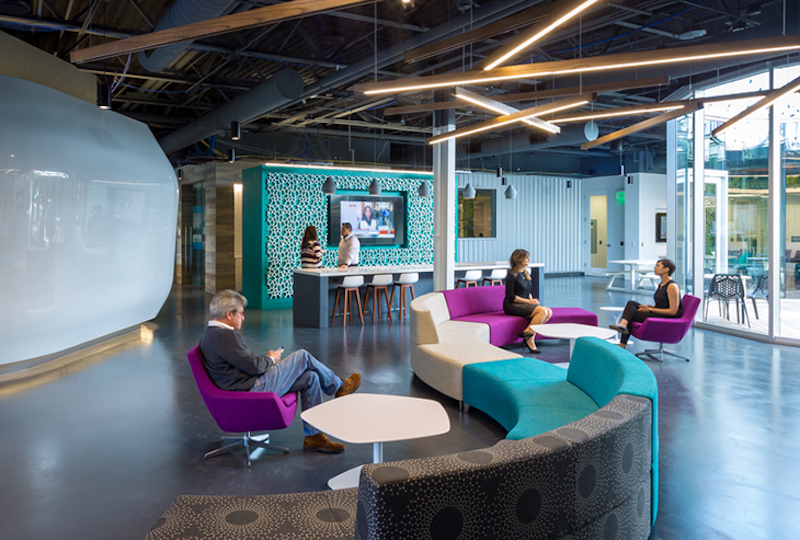It takes a generation for society to integrate a significant innovation, tech guru John Seely Brown argues. Healthcare exemplifies how technology innovations like digital connectivity and artificial intelligence are playing out in ordinary life—more evolution than revolution.
An article by Eva Hagberg Fisher in the latest Dialogue describes changes in healthcare that reflect how digital tech’s integration finds synergy with broader trends like walkable urbanism and wellness. The former favors a richer, denser mix served by transit; the latter emphasizes prevention through lifestyle changes and self-care. Both put more emphasis on community support, with healthcare providers redefining their roles and facilities accordingly.
The emergence of local healthcare clinics speaks to this. Hagberg Fisher gives two examples. The first collocates traditional patient care services with housing and jobs counseling delivered by others. It is sized and staffed to serve the urban neighborhoods around it. The second adds community-serving healthcare to a hospital with a world-famous trauma unit. Transit accessible from adjoining districts, it caters to a larger cohort. But both adhere to the wellness model.
Wellness takes a holistic view of health. Holistic medicine looks beyond prevention to ask how treatment can integrate medical research, technology and expertise. Artificial intelligence has a growing role in speeding diagnoses and treatment design, but in the context of whole-patient care that is the hallmark of healthcare’s new paradigm. Treatment is team-based, and tech is on the team, but so are the patients—more empowered than ever to help themselves get better.
Human-centered healthcare design maps closely to this. The teamwork that holistic medicine needs is supported spatially with greater transparency where it matters—whenever patients, caregivers and researchers can benefit from seeing and learning from each other, for example. A state-of-the-art rehabilitation hospital with double-height physical therapy settings for hands-on, team-delivered care is the most dramatic of Hagberg Fisher’s examples, but she has others that illustrate how digital technology impacts healthcare facility design in more ordinary ways.
Take the waiting room. Better scheduling means that fewer people need to wait. Digital check-in removes a layer of clerical work, enabling staff to focus on patients. Waiting rooms could shrink (or disappear) or be rethought to isolate sicker and contagious patients from others. Medical centers, meanwhile, are asking how best to incorporate flat screens into patient rooms to facilitate consultations that may conference in other specialists—or involve a virtual doctor.
 Grass-roots wellness, the other side of holistic healthcare, is also on the rise. Here, yoga in The PNC Plaza, Pittsburgh. Photo: Connie Zhou.
Grass-roots wellness, the other side of holistic healthcare, is also on the rise. Here, yoga in The PNC Plaza, Pittsburgh. Photo: Connie Zhou.
Technology’s impact is woven into the everyday. Hagberg Fisher’s healthcare informants cite airports as precedents that prove a given strategy’s broad acceptability, even as they note how technology is reshaping medicine by improving diagnoses and extending the range of medicine to places like Africa that face severe shortages of trained personnel. Like much else that’s new, the changes are incremental rather than dramatic, and rooted most of all in human experience.
More from Author
Gensler | Oct 21, 2024
3 surprises impacting the return to the office
This blog series exploring Gensler's Workplace Survey shows the top three surprises uncovered in the return to the office.
Gensler | Jun 26, 2024
5 ways ESG can influence design and create opportunities
Gensler sustainability leaders Stacey Olson, Anthony Brower, and Audrey Handelman share five ways they're rethinking designing for ESG, using a science-based approach that can impact the ESG value chain.
Gensler | May 20, 2024
10 spaces that are no longer optional to create a great workplace
Amenities are no longer optional. The new role of the office is not only a place to get work done, but to provide a mix of work experiences for employees.
Gensler | Apr 15, 2024
3 ways the most innovative companies work differently
Gensler’s pre-pandemic workplace research reinforced that great workplace design drives creativity and innovation. Using six performance indicators, we're able to view workers’ perceptions of the quality of innovation, creativity, and leadership in an employee’s organization.
Gensler | Mar 13, 2024
Trends to watch shaping the future of ESG
Gensler’s Climate Action & Sustainability Services Leaders Anthony Brower, Juliette Morgan, and Kirsten Ritchie discuss trends shaping the future of environmental, social, and governance (ESG).
Gensler | Feb 15, 2024
5 things developers should know about mass timber
Gensler's Erik Barth, architect and regional design resilience leader, shares considerations for developers when looking at mass timber solutions.
Gensler | Jan 15, 2024
How to keep airports functional during construction
Gensler's aviation experts share new ideas about how to make the airport construction process better moving forward.
Gensler | Dec 18, 2023
The impacts of affordability, remote work, and personal safety on urban life
Data from Gensler's City Pulse Survey shows that although people are satisfied with their city's experience, it may not be enough.
Gensler | Nov 16, 2023
How inclusive design supports resilience and climate preparedness
Gail Napell, AIA, LEED AP BD+C, shares five tips and examples of inclusive design across a variety of building sectors.
Gensler | Oct 16, 2023
The impact of office-to-residential conversion on downtown areas
Gensler's Duanne Render looks at the incentives that could bring more office-to-residential conversions to life.
















